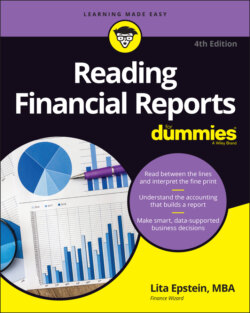Читать книгу Reading Financial Reports For Dummies - Lita Epstein - Страница 50
Figuring out reporting
ОглавлениеReporting requirements for a private company vary based on its agreements with stakeholders. Outside investors in a private company usually establish reporting requirements as part of the agreement to invest funds in the business. A private company circulates its reports among its closed group of stakeholders — executives, managers, creditors, and investors — and doesn't have to share them with the public.
A private company must file financial reports with the SEC when it has more than 500 common shareholders and $10 million in assets, as set by the Securities and Exchange Act of 1934. Congress passed this act so that private companies that reach the size of public companies and acquire a certain mass of outside ownership have the same reporting obligations as public companies. (See the nearby sidebar “Private or Publix?” for an example of this type of company.)
When a private company's stock ownership and assets exceed the limits set by the Securities and Exchange Act of 1934, the company must file a Form 10, which includes a description of the business and its officers, similar to an initial public offering (also known as an IPO, which is the first public sale of a company's stock). After the company files Form 10, the SEC requires it to file quarterly and annual reports.
